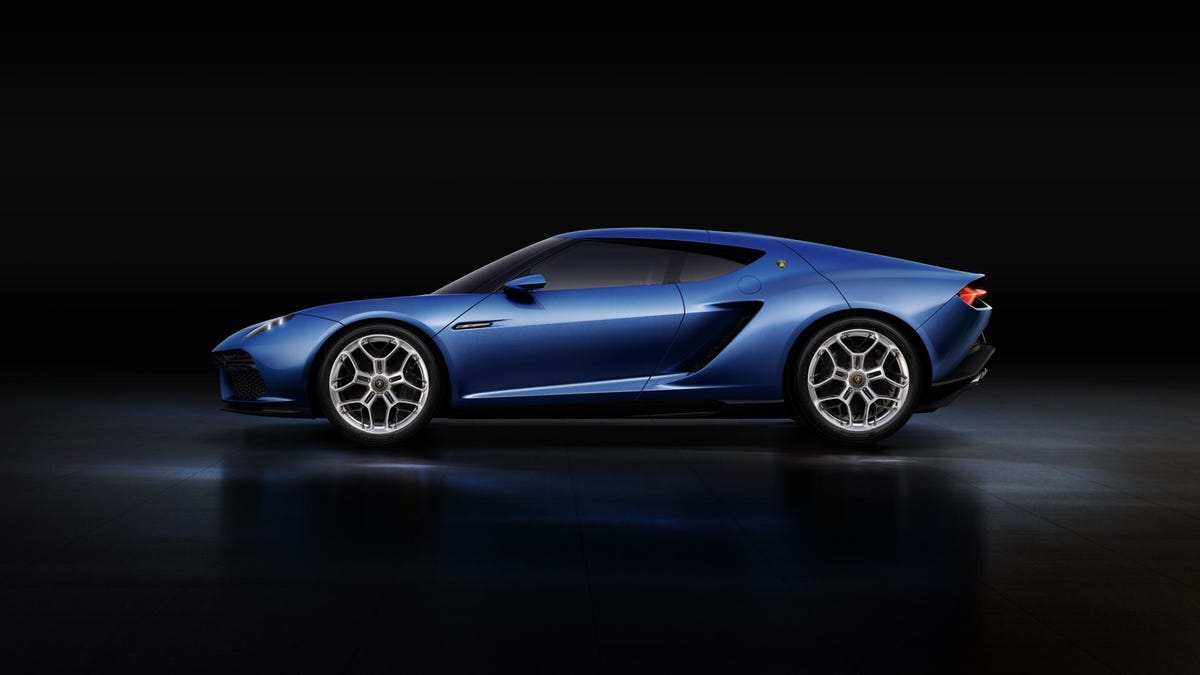Lamborghini debuts 910 horsepower Asterion plug-in hybrid
Lambo wants in on the new wave of hybrid supercars, so it's brought the 910-horsepower Asterion concept to the 2014 Paris Motor Show.

PARIS -- In the wake of the debuts of the McLaren P1, the Porsche 918 Spyder , and the LaFerrari, hybrid supercars are the new hotness these days and Lamborghini wants a piece of the action. At the 2014 Paris Motor Show, the Italian automaker unveiled the Lamborghini Asterion LPI 910-4.
Lamborghini puts a cheeky twist on its tradition of naming its models after bulls by giving the Asterion the name of a minotaur -- a mythical hybrid that is part man and part bull. That's pretty clever, but what I'm most interested in isn't the hybrid name, but the plug-in hybrid (PHEV) power-train.
The Asterion starts with a 5.2-liter, naturally aspirated V-10 engine that outputs a stated 610-horsepower and 413 pound-feet of torque and adds a trio of electric motors. The first is an integrated starter motor and generator that lives between the V-10 engine and its 7-speed dual-clutch transmission at the rear axle, augmenting the engine's torque output, generating electricity for the other motors and the battery pack, and allowing the gasoline mill to stop and start instantaneously as needed. The remaining two electric motors sit on the front axle providing all-wheel drive traction and torque vectoring.
Total power when all of the electric motors and the V-10 are working in concert is stated at 910 horsepower. Zero to 62 mph (100 kph) happens in just 3 seconds before the Asterion continues onward to its top speed of 198.8 mph (320 kph).
On the Asterion's steering wheel, you'll find buttons that allow the selection of one of three engine driving modes. Zero is the full-electric mode that makes use of energy stored in the lithium-ion battery pack -- located in the vehicle's center tunnel -- to drive only the front wheels. The idea of a FWD Lamborghini is amusing, but the Asterion's 31-mile (50-km) fully electric driving range does make it compelling for around-town cruising.
The next mode, I for "Ibrido," is the standard hybrid operation where the V-10 and electric motors work together, delivering up to the full 910 ponies and as low as 98 g/km CO2 emissions. Finally, T for "Termico" (thermal) drives the vehicle using only the gasoline engine's output at the rear wheels.
Like any good supercar, the Asterion LPI 910-4 puts its powertrain on display. The longitudinal, rear amidships engine is showcased beneath a transparent engine cover comprised of three hexagonal glass sections. These panels rotate and reorient, depending on the driving mode selected -- pure electric, hybrid, or pure gasoline.
The cabin and the chassis design point to the Asterion being conceptualized as a more comfortable Lamborghini cruiser -- built for daily driving on public roads, rather than an all-out track tool. The seating position is slightly higher than in the Huracan and Aventador. The A pillars, while still sharply sloped, are more upright, affording the driver and passenger increased visibility and more headroom. Though there's barely space for a laptop case in the Aventador, the Asterion boasts a luggage compartment at the front of the car that should be enlarged thanks to the lack of a front driveshaft and differential.
At the center of the dashboard, a portable tablet handles infotainment functions such as GPS, audio controls, and climate controls. This increased attention to tech and navigation means that you probably won't get lost while silently prowling even the most labyrinthine streets with this minotaur.
I've got mixed feelings about the Asterion's design, which is more curvaceous than its sharply angled relatives, the Aventador and Huracan. The design is, presumably, supposed to pay homage to the Lamborgini Miura of the late 60s and 70s, but something about curves on a modern Lamborghini just doesn't sit right with me. Also, the Asterion's tall profile (for a supercar) and front end design is filling my mind with thoughts of Lamborghini's Urus SUV concept.
Whether that last bit is a good thing or bad may not matter for the Asterion's immediate future, as the LPI 910-4 is just a technology demonstrator, which means that this concept may not be bound for production anytime soon. Elements of its hybridization efforts and design, however, are sure to find their way into future Lamborghini vehicles.

